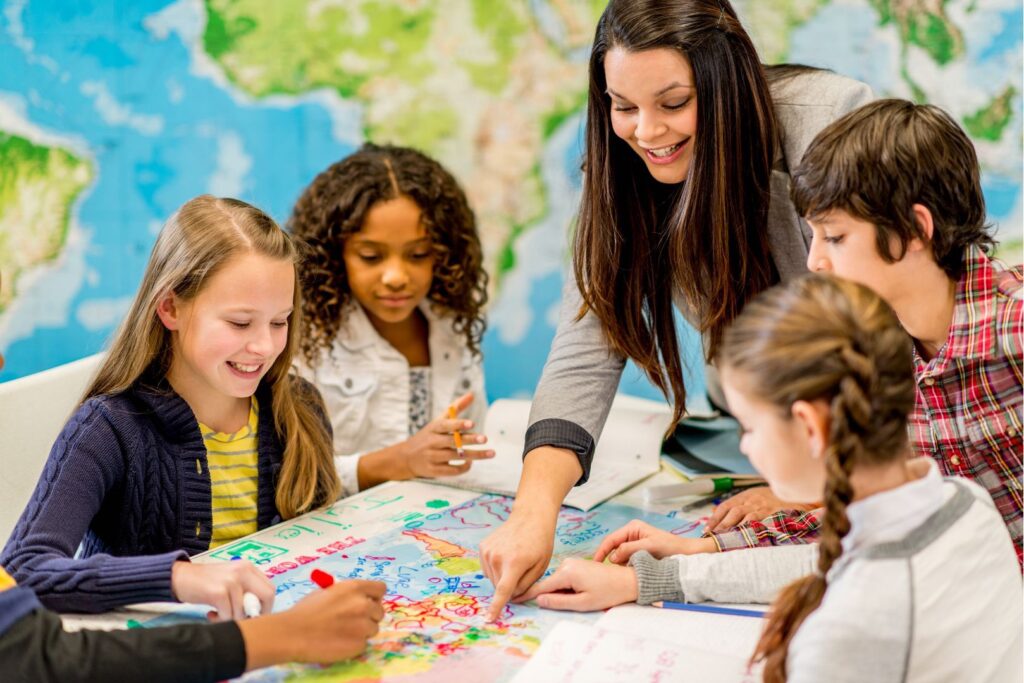“Fairness is not giving everyone the same thing; fairness is giving each person what they need to succeed.” –unknown author
In utopia, every student would have access to high quality learning. However, the reality is that students face various barriers that can hinder their access to learning. One of the most powerful ways to address these barriers and ensure that every student has the chance to succeed is by creating inclusive school environments.
WHAT IS INCLUSIVE EDUCATION?
Inclusive education refers to an educational approach that seeks to welcome all learners in general education classrooms, regardless of their individual differences. Ensuring that all students are welcomed into the heart of the school community, not pushed to the periphery, operationalizes the value of the human dignity of all (Scanlon, 2009). The spirit of inclusion is not just about placing students in the same classroom. It’s about adapting the curriculum, teaching methods, and school environment to meet the diverse needs of all students. In an inclusive environment, every student is recognized as an integral part of the learning community, where they can learn from each other’s experiences, perspectives, and strengths.
KEY COMPONENTS OF INCLUSIVE EDUCATION
“Inclusion is not a strategy to help people fit into the systems and structures which exist in our societies; it is about transforming those systems and structures to make it better for everyone.” -Diane Richler
School Leadership & School Culture
Before addressing strategies, methods, and systems, it is important to first address disposition. As has been mentioned in previous ADAC Answers Blog articles, the role of the school leader is critical. The school leader sets the vision for the school, ensure fidelity of mission, and is the architect of a school’s culture. This drives the prerequisite attitude and empathy necessary to implement the concrete initiatives to create an inclusive school environment.

Universal Design for Learning (UDL)
UDL Learning is an approach that provides multiple means of representation, engagement, and expression. The concept of UDL was developed by David H. Rose of the Center for Applied Special Technology (CAST) in the 1980s. Inspired by the principles of universal design, which originated in architecture and aims to create environments that are accessible to everyone, Rose adapted these principles to education to create UDL. This framework promotes flexible learning environments to accommodate the diverse needs of all learners. By using UDL, educators can tailor lessons to accommodate a wide range of learning styles, needs, and abilities. This flexibility ensures that every student has an opportunity to access the content in a way that works best for them.
Support Systems and Resources
To ensure that all students thrive, schools must provide support systems, such as a Multi-Tiered System of Supports (MTSS). In 2015, the Every Student Succeeds Act (ESSA) provided the context for MTSS. This framework is designed to address the academic, behavioral, social and emotional needs of all students. It provides a system that offers interventions tailored to the specific needs of each individual student. By offering varying levels of interventions, MTSS ensures that each student receives the right kind of help at the right time. MTSS also encourages a data-driven approach to teaching and learning and relies on progress monitoring to ensure that the interventions are successful. In essence, MTSS provides a systematic approach to address gaps in learning and behavioral concerns, creating an environment where students feel supported and understood. However, creating an inclusive school environment involves the whole child approach. Therefore, MTSS also places a strong emphasis on social-emotional learning (SEL) at all levels. This ensures that students are equipped with the skills necessary to manage their emotions. At its core, MTSS is about equity.
“Children learn best when they feel valued, when people hold high expectations for them, and when they are taught and supported well.” -Cheryl Jorgenson
CONCLUSION
Inclusive education is about more than just enrolling students with diverse needs; it’s about recognizing the value in every learner and creating a community where every student feels welcome and supported. By building inclusive classrooms, we not only improve the educational outcomes for all students but also cultivate a new generation of individuals who will contribute positively to society and the world.
WANT TO LEARN MORE ABOUT INCLUSIVE EDUCATION?
Join ADAC Answers Live: Collaborative Conversations for School Leaders on April 2, 2025 at 4pm EST (1pm PST). Dr. Drummey and Kate McConnell will provide additional insights and answer your questions.
About the Author:
A lifelong special education practitioner, Dr. Sandra Drummey has served as a teacher, vice-principal, and principal. As an administrator, she established special education centers, and as the Assistant Superintendent of Catholic Schools in the Diocese of Fall River, she oversaw the creation and implementation of a first-of-its-kind diocesan-wide special education program. Sandi holds a bachelor’s degree from Suffolk University, a master’s degree from Boston College, and a doctoral degree from Boston College.
References:
Scanlon, M. (2009). All Are Welcome: Inclusive Service Delivery in Catholic Schools
ESSA (2015). Every Student Succeeds Act of 2015, Pub. L. No. 114-95 114 Stat. 1177 (2015-2016).

